UAE Cybersecurity Market Size
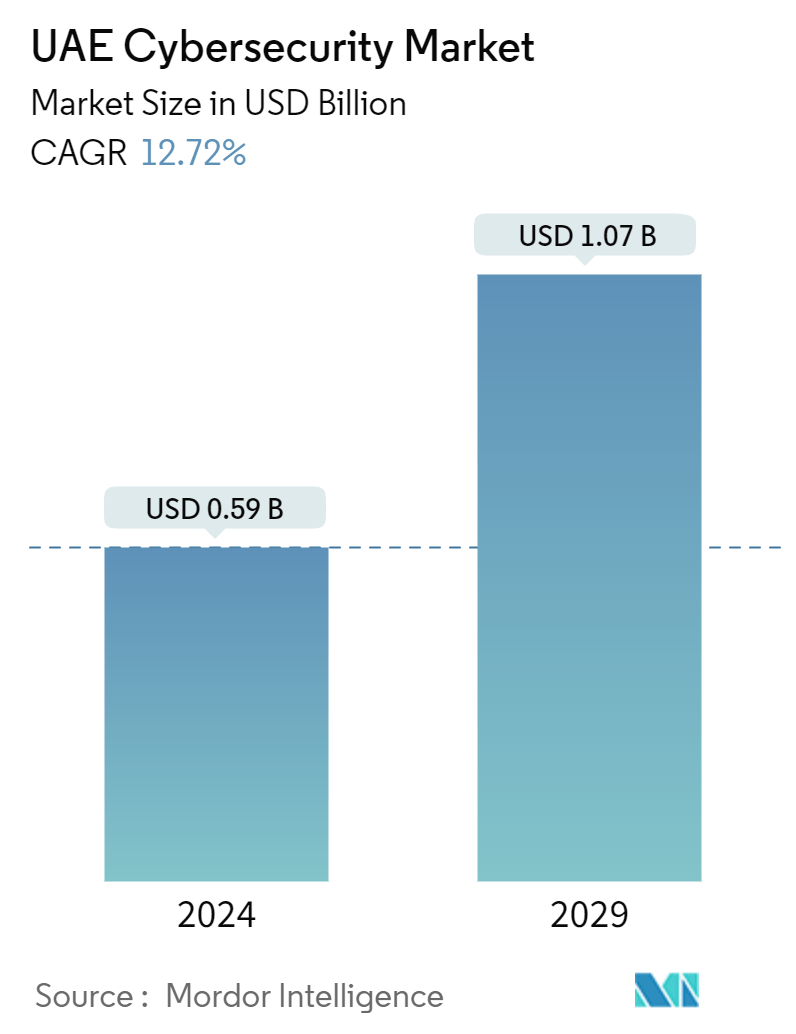
| Study Period | 2019 - 2029 |
| Base Year For Estimation | 2023 |
| Market Size (2024) | USD 0.59 Billion |
| Market Size (2029) | USD 1.07 Billion |
| CAGR (2024 - 2029) | 12.72 % |
| Market Concentration | Low |
Major Players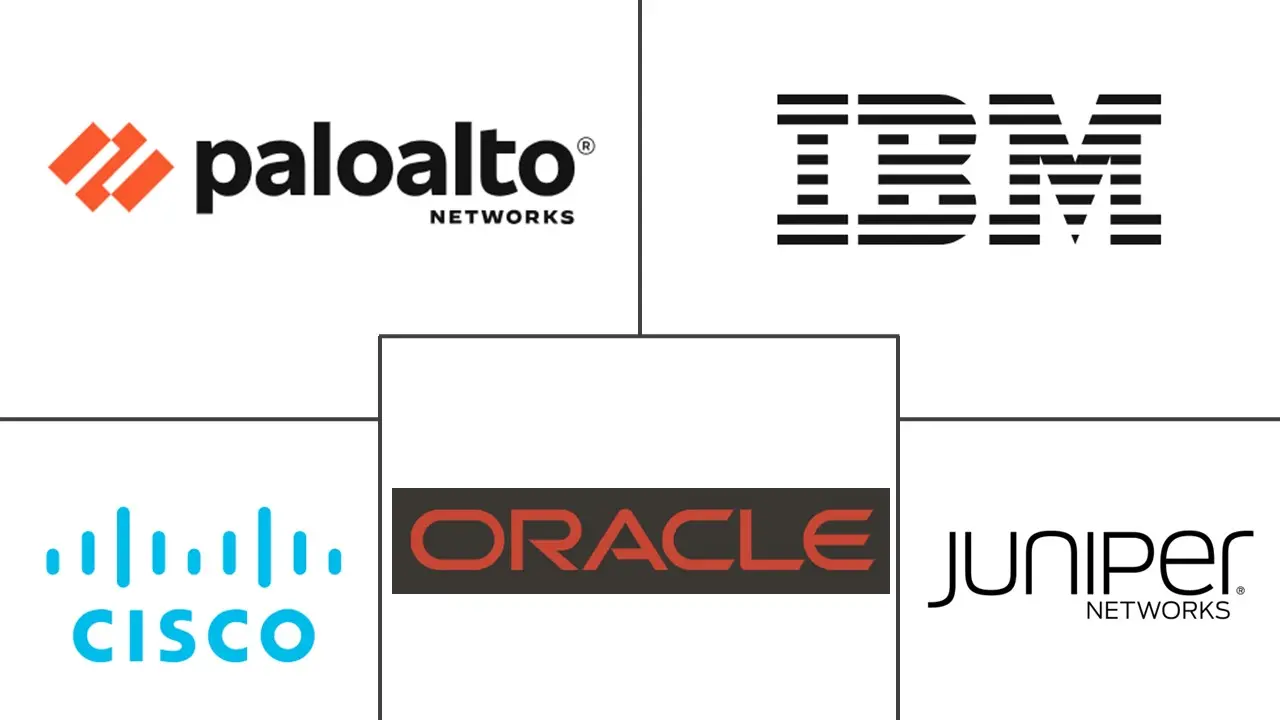
*Disclaimer: Major Players sorted in no particular order |
UAE Cybersecurity Market Analysis
The UAE Cybersecurity Market size is estimated at USD 0.59 billion in 2024, and is expected to reach USD 1.07 billion by 2029, growing at a CAGR of 12.72% during the forecast period (2024-2029).
The rapid digitalization in the United Arab Emirates has triggered the number of connected devices by opening new cyberattack gateways. Cybersecurity has become increasingly imperative for governments and companies as digitization has increased due to the COVID-19 pandemic, with digital criminal activity increasing.
- A considerable increase in cyberattacks during the COVID-19 pandemic, terrorism threats, and digital transformation have pushed the UAE to secure its cyber borders through high expenditure within its new budget. In October last year, the UAE announced adopting cybersecurity standards for government agencies as the country revealed the budget for the next five years.
- The United Arab Emirates has witnessed a more than 250 percent increase in cyberattacks during the pandemic, according to the UAE Government cybersecurity chief. Ransomware and phishing were the most common forms of attack, and the financial and healthcare sectors were among the most prominent targets. This sudden increase was also attributed to the activists against the UAE's recognition of Israel and normalizing these countries' relationships.
- UAE's government has been emphasizing cybersecurity owing to increasing cyberattacks. For instance, according to the World Economic Forum's (WEF) 'The Global Risks Report' of this year, the risk of cybersecurity failure is ranked among the top five concerns for the UAE.
- As organizations in the UAE undergo digital transformation and move their operations online, the attack surface for cyber threats expands. This provides cybercriminals with more opportunities to target sensitive data and systems.
- Budget constraints and the high cost of cybersecurity solutions can pose challenges for the market, as they can limit the ability of organizations and government entities to protect their digital assets effectively.
UAE Cybersecurity Market Trends
Stringent Government Regulations for Increasing Adoption of Cybersecurity Solutions is Expected to Drive the Market Growth
- UAE is one of the prominent economies in the Middle East region and has been focusing on moving toward a digital economy for the last few years, combined with government initiatives and increased interest from global and local vendors. Similarly, the country is making headways in digitizing almost every industry in the country. With the emphasis on digitalization, the vulnerabilities associated with it are seeing growth as well.
- Investment drives the demand for ICT products and services in aviation, healthcare, hospitality, retail, and other sectors linked to the UAE’s economic diversification plans, such as real estate and manufacturing. UAE ICT market challenges include the high cost of internet access and bandwidth and its exposure to cybersecurity threats. To attract foreign companies and develop human capital resources, the UAE government has established the UAE ICT Fund, which educates hundreds of Emirati students overseas in the ICT field.
- Moreover, the UAE’s SmartPass system has created a digital framework for the operations of all government services and ministries. The UAE 2031 AI Strategy plans to incorporate Artificial Intelligence (AI) technology into these services.
- Along with the UAE 2031 AI strategy, the Emirates Blockchain Strategy 2021, the UAE National Innovation Strategy, the UAE National Strategy for Higher Education 2030, and the UAE Centennial 2071 Plan have also enabled the country’s rapid digital adoption. Therefore, adopting cybersecurity is expected to witness huge regional demand during the forecast.
- In March 2022, the International Civil Aviation Organization announced new developments and progress in areas of aviation cybersecurity and innovation with the UAE government. The ICAO-UAE partnership is expected to enhance knowledge sharing and experience in terms of cybersecurity, accelerators, and innovation in future civil aviation.
- With the growing 5G, mobile subscriptions, and total fiber broadband networks in the country, the government, in collaboration with telecommunication companies, is taking initiatives to tackle cyberattacks and improve security standards and practices across the According to OpenSignal, the UAE average 5G download speed in 2023 at 298.4 Mbps.
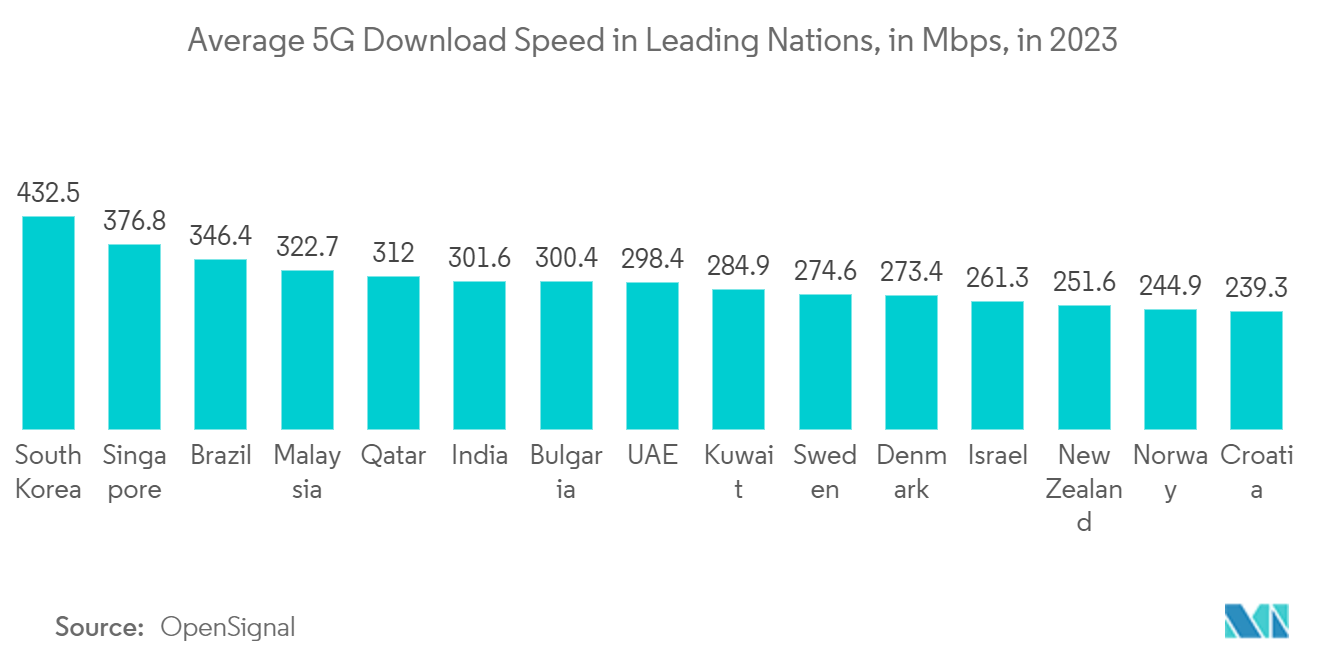
Retail Industry Vertical is Expected to Hold Significant Market Share
- The retail industry has become a prime target for cyber-attacks, as it handles large amounts of sensitive customer data, including payment card information and personal identification details. According to PPRO, the most popular online payment method in the United Arab Emirates (UAE) in 2023 was by card about 48 percent. As a result, the demand for cybersecurity solutions in the retail sector has increased significantly over the last few years, leading to the growth of the cybersecurity market in the industry.
- Many retailers are moving their operations to the cloud to reduce costs and improve efficiency. However, this shift also increases the risk of cyber-attacks. As a result, retailers are adopting cloud security solutions, such as encryption and access controls, to protect their sensitive data in the cloud.
- However, several retailers have been slow to adopt or invest in cybersecurity measures, either due to a lack of resources or a belief that they are not at risk of being targeted. This has made them vulnerable to cyber-attacks.
- In addition, retailers are using threat intelligence solutions to stay ahead of cyber threats, which provide real-time information on emerging threats, enabling retailers to take action. Thus, as retailers continue to adopt new technologies, the industry's demand for cybersecurity solutions is expected to grow.
- Data is crucial for the retail industry and is derived from the statistics of warehouse inventory, customer traffic patterns, point-of-sale systems, customer surveys, and competitor pricing, among others. Leveraging and drawing meaningful insights from large data sets is critical to forecasting the growth of the retail industry. Thus, breaches lead to customer dissatisfaction, extend downtime, and inflict regulatory penalties.
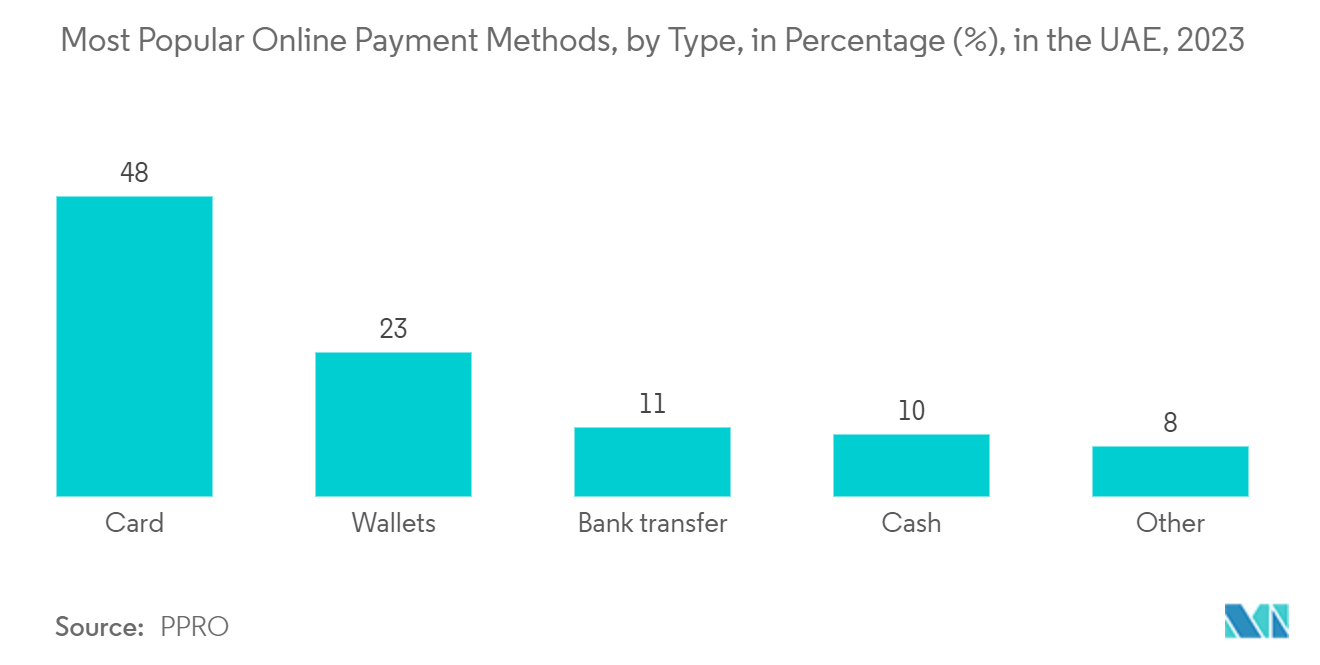
UAE Cybersecurity Industry Overview
The UAE Cybersecurity Market fragmented with the presence of major players like IBM, Cisco Systems, Inc., Juniper Networks, Oracle Corporation, and Palo Alto Networks. Players in the market are adopting strategies such as partnerships and acquisitions to enhance their solution offerings and gain sustainable competitive advantage.
- September 2022 - To address misconfiguration in SaaS (Software-as-a-Service) applications, Palo Alto Networks announced innovations in Prisma SASE that allow customers to identify and remediate misconfigurations in SaaS apps using SaaS Security Posture Management capabilities. Palo Alto Networks strengthened its protection for SaaS (Software-as-a-Service) applications and reinforced ZTNA (Zero Trust Network Access) 2.0 with improved capabilities.
- January 2022 - Emirates Integrated Telecommunications Company (EITC) entered into a strategic partnership with IBM, hoping to harness IBM's security and software solutions for EITC's Digital Trust portfolio and Cyber Defense Center.
UAE Cybersecurity Market Leaders
-
IBM
-
Cisco Systems, Inc.
-
Juniper Networks
-
Oracle Corporation
-
Palo Alto Networks
*Disclaimer: Major Players sorted in no particular order
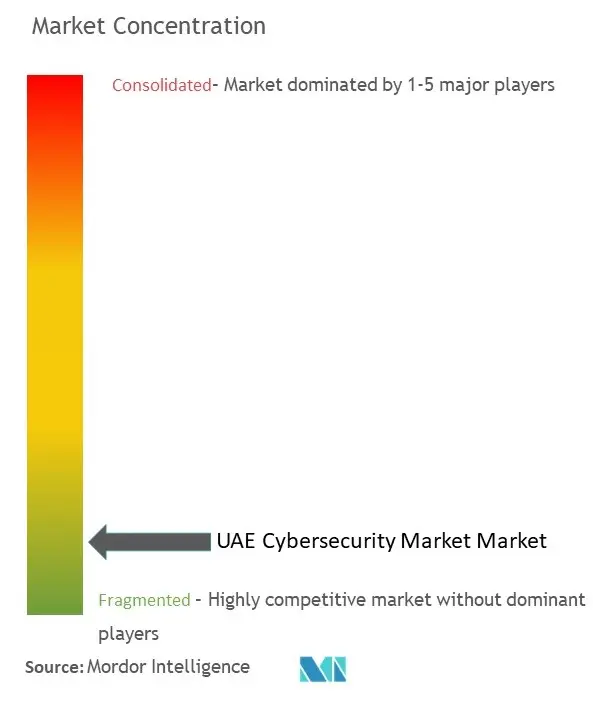
UAE Cybersecurity Market News
- February 2024 - Axon Technologies, one of the leading cybersecurity service providers headquartered in Dubai, UAE, and Keyrus, one of the global frontrunners in data intelligence and digital transformation, have unveiled a strategic partnership aimed at bolstering cybersecurity services. This collaboration is set to revolutionize the cybersecurity landscape in the Middle East and Africa, elevating standards and innovation.
- August 2023 - Mastercard has set up a global center for advanced AI and cyber technology in Dubai. The UAE's Artificial Intelligence, Digital Economy, and Remote Work Applications Office, in collaboration with Mastercard, have inked a Memorandum of Understanding. The aim is to enhance the region's artificial intelligence capabilities. The primary focus initially will be on combatting financial crime, bolstering digital security, and fostering inclusive growth, both in the UAE and globally.
UAE Cybersecurity Market Report - Table of Contents
1. INTRODUCTION
- 1.1 Study Assumptions and Market Definition
- 1.2 Scope of the Study
2. RESEARCH METHODOLOGY
3. EXECUTIVE SUMMARY
4. MARKET INSIGHTS
- 4.1 Market Overview
-
4.2 Industry Attractiveness - Porter Five Forces
- 4.2.1 Bargaining Power of Suppliers
- 4.2.2 Bargaining Power of Consumers
- 4.2.3 Threat of New Entrants
- 4.2.4 Intensity of Competitive Rivalry
- 4.2.5 Threat of Substitutes
- 4.3 Assessment of Impact of COVID-19 on the Market
5. MARKET DYNAMICS
-
5.1 Market Drivers
- 5.1.1 Stringent Government Regulations for Increasing Adoption of Cybersecurity Solutions
- 5.1.2 Growing Digitalization and Remote Working
-
5.2 Market Challenges
- 5.2.1 Budget Constraints and High Cost of Solutions
6. MARKET SEGMENTATION
-
6.1 By Security Type
- 6.1.1 Network Security
- 6.1.2 Cloud Security
- 6.1.3 Application Security
- 6.1.4 End-point Security
- 6.1.5 Wireless Network Security
- 6.1.6 Other Security Types
-
6.2 By Component
- 6.2.1 Hardware
- 6.2.2 Solution
- 6.2.2.1 Threat Intelligence and Response
- 6.2.2.2 Identity and Access Management
- 6.2.2.3 Data Loss Prevention
- 6.2.2.4 Security and Vulnerability Management
- 6.2.2.5 Intrusion Prevention System
- 6.2.2.6 Other Solutions
- 6.2.3 Services
- 6.2.3.1 Professional Services
- 6.2.3.2 Managed Services
-
6.3 By Deployment
- 6.3.1 Cloud
- 6.3.2 On-premise
-
6.4 By End-user Industry
- 6.4.1 Banking, Financial Services and Insurance
- 6.4.2 Healthcare
- 6.4.3 Manufacturing
- 6.4.4 Retail
- 6.4.5 Government
- 6.4.6 IT and Telecommunication
- 6.4.7 Other End-user Industries
7. COMPETITIVE LANDSCAPE
-
7.1 Company Profiles
- 7.1.1 IBM
- 7.1.2 Cisco Systems, Inc.
- 7.1.3 Juniper Networks
- 7.1.4 Oracle Corporation
- 7.1.5 Palo Alto Networks
- 7.1.6 Fortinet, Inc.
- 7.1.7 Microsoft Corporation
- 7.1.8 Trend Micro DMCC
- 7.1.9 Dell Technologies, Inc.
- 7.1.10 Rapid7, Inc.
- 7.1.11 Injazat
- *List Not Exhaustive
8. INVESTMENT ANALYSIS
9. FUTURE OF THE MARKET
** Subject To AvailablityUAE Cybersecurity Industry Segmentation
Cyber threats are internet-based efforts to disrupt or damage information systems and hack crucial information using malware, spyware, and phishing. Cybersecurity solutions aid organizations in monitoring, detecting, reporting, and countering cyber threats to maintain data confidentiality.
The United Arab Emirates Cybersecurity Market is segmented by security type (network security, cloud security, application security, end-point security, wireless network security), by component (hardware, solution, services), by deployment (cloud, on-premise), and by end-user industry (BFSI, healthcare, manufacturing, retail, government, IT and telecommunication). The report offers market forecasts and size in value (USD) for all the above segments.
| By Security Type | Network Security | |
| Cloud Security | ||
| Application Security | ||
| End-point Security | ||
| Wireless Network Security | ||
| Other Security Types | ||
| By Component | Hardware | |
| Solution | Threat Intelligence and Response | |
| Identity and Access Management | ||
| Data Loss Prevention | ||
| Security and Vulnerability Management | ||
| Intrusion Prevention System | ||
| Other Solutions | ||
| Services | Professional Services | |
| Managed Services | ||
| By Deployment | Cloud | |
| On-premise | ||
| By End-user Industry | Banking, Financial Services and Insurance | |
| Healthcare | ||
| Manufacturing | ||
| Retail | ||
| Government | ||
| IT and Telecommunication | ||
| Other End-user Industries |
UAE Cybersecurity Market Research FAQs
How big is the UAE Cybersecurity Market?
The UAE Cybersecurity Market size is expected to reach USD 0.59 billion in 2024 and grow at a CAGR of 12.72% to reach USD 1.07 billion by 2029.
What is the current UAE Cybersecurity Market size?
In 2024, the UAE Cybersecurity Market size is expected to reach USD 0.59 billion.
Who are the key players in UAE Cybersecurity Market?
IBM, Cisco Systems, Inc., Juniper Networks, Oracle Corporation and Palo Alto Networks are the major companies operating in the UAE Cybersecurity Market.
What years does this UAE Cybersecurity Market cover, and what was the market size in 2023?
In 2023, the UAE Cybersecurity Market size was estimated at USD 0.51 billion. The report covers the UAE Cybersecurity Market historical market size for years: 2019, 2020, 2021, 2022 and 2023. The report also forecasts the UAE Cybersecurity Market size for years: 2024, 2025, 2026, 2027, 2028 and 2029.
What future trends are expected in the UAE Cybersecurity Market?
Future trends that are expected in the United Arab Emirates Cybersecurity Market are a) Integration of blockchain technology b) Increased use of cloud-based security solutions c) Greater emphasis on cybersecurity education and training programs
UAE Cybersecurity Industry Report
The global cybersecurity market is witnessing substantial expansion, driven by the increasing need for digital transformation and heightened data risk awareness across various sectors. This trend is particularly notable in the UAE, where the cybersecurity market size is expanding due to rising cyber threats and the demand for robust security solutions in diverse industries. Technological advancements such as AI and IoT are further propelling the growth, offering new opportunities for cybersecurity companies in UAE. Despite challenges like high costs and underestimation of internal threats, the strategic importance of cybersecurity in corporate planning and digitalization of operations continues to fuel the demand.
The market segmentation includes crucial areas such as identity & access management and risk & compliance management, essential for safeguarding sensitive data and systems. A detailed market overview reveals that the UAE cybersecurity market is segmented by security type, component, deployment, and end-user industry. This comprehensive market report provides insights into various aspects such as market size, market share, growth rate, and market forecast. The industry trends highlight the importance of network security, cloud security, application security, and end-point security in maintaining robust cybersecurity frameworks.
The market leaders in the UAE cybersecurity industry are focusing on innovative solutions and services to stay ahead in the competitive landscape. The industry analysis indicates a significant market growth driven by the adoption of advanced technologies and the increasing need for cybersecurity measures across sectors like BFSI, healthcare, manufacturing, retail, government, and IT and telecommunication. The industry outlook and market predictions suggest continued growth and expansion in the coming years, with a strong emphasis on market value and market segmentation.
For a comprehensive understanding of the UAE cybersecurity market, it is essential to review the market data, industry statistics, and industry reports. The market forecast and market review provide valuable insights into the future trends and potential growth areas. Research companies play a crucial role in providing detailed industry information and conducting in-depth industry research to support strategic decision-making. The report pdf offers a thorough analysis of the market structure, market trends, and market update, making it an indispensable resource for stakeholders and industry players.



